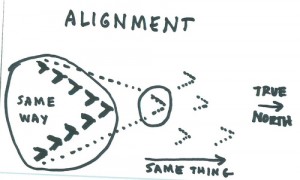Social Monitoring: Do You Need It?
 Many businesses implement complex marketing automation systems with a goldmine of data coming in – yet never seem to think about social monitoring. Taking a look at how customers behave when they use your website or view your marketing materials can give you a ton of great information, but you’re not always going to get the full picture of a user’s behavior scope.
Many businesses implement complex marketing automation systems with a goldmine of data coming in – yet never seem to think about social monitoring. Taking a look at how customers behave when they use your website or view your marketing materials can give you a ton of great information, but you’re not always going to get the full picture of a user’s behavior scope.
While you’re confronted with raw data that can inform your marketing plan and increase branding or even sales, you may be missing out on valuable information that puts you in the loop about what customers are actually looking for. By monitoring conversations surrounding your brand and relevant keywords, you can get a better idea of how to craft customized content and engage with your audiences at a higher level.
Social Monitoring: What is It?
In a nutshell, social monitoring is about watching what your customers are tuning into online in order to make decisions about the types of content you put out there and how you represent your brand.
For instance, if you own a tire company and communicate with customers directly on your Facebook page, you may find that a decent amount of customers ask questions about flats – repairing tires, when to buy new tires and how to avoid driving on a tire that is in dangerously bad shape. You see social media conversations on your Facebook as well as web searches asking questions about tires.
However, major news stories are out there highlighting the dangers of driving in various weather conditions without the appropriate tire. Your competitors are engaging in dialogue with potential customers on their own Facebook pages and within various news stories about tire conditions in bad weather. If you’re not having these conversations, you’re missing out on putting yourself and your expertise in front of customers in a way that would result in brand recognition and sales.
Engaging Socially
The above is a simplistic example, but you can apply it to just about any industry. There are plenty of ways to figure out the kinds of things your customers want to talk about. Check hashtags on Twitter, set up an alert for your core business keywords using http://alerts.google.com, or incentivize customers to complete online surveys that gauge what types of topics they’re interested in talking about. You can also look to click through and open rate in your email marketing efforts to determine what content best engages customers.
Marketing automation is a must for your business, but the more data you can collect from other channels, the more reliably you can determine the best direction for your marketing. You deserve a marketing automation dashboard that gives you everything in a package – from article writing to social monitoring to robust reports and engagement suggestions. Check out Lead Liaison’s dashboard to find out more about how a well-rounded marketing automation tool can take your business to the next level!








